- Home
- Bill Bryson
Icons of England Page 6
Icons of England Read online
Page 6
RUTLAND HOW I LOVE THEE
Julia Bradbury
on a heart-shaped county
‘PLUCK’ IS A GREAT word. The people of Rutland have pluck and it is something I’ve always admired. I have had occasion to read some bird books recently (some of my Countryfile assignments have involved ornithology), and I chanced upon Rory McGrath’s Bearded Tit. This is what he has to say about Rutland: ‘For a long time it was subsumed into Leicestershire but the plucky Rutlanders had agitated for it to be restored to its former glory. So now it is Rutland again, with the pretty town of Oakham as its capital; a beacon of hope for a rapidly disappearing Britain.’ How wonderful – welcome to a Beacon of Hope.
Whether the county is named after a wealthy landowner (Rota), or was christened Rutland because of its rich red soil is a matter of some debate, but there is no question about its size; the heart-shaped area covers 150 square miles and measures sixteen miles across its widest point east to west. It lies almost in the centre of England. The underlying rock, the most valuable of which is the deliciously named Oolite, dates back to Jurassic and Pleistocene times. Many of the houses across the county are built out of Oolite. I am lucky enough to have grown up in one of those, so the heart shape of Rutland is in my heart.
You cannot talk about Rutland and not mention the Rutland Water. The hamlets of Nether Hambleton and Middle Hambleton were sacrificed in the 1970s to make way for this stretch of water, which has now become an integral part of life here. Sailing, fishing and cruising on the Rutland Belle are all common place. Cycling and eating your way around the reservoir are easy to do. Beer festivals, horse trials, endurance races and, let us not forget, walking, are all here for the taking. And the birdwatchers would never forgive me if I didn’t encourage you to pick up the binos at the Rutland Osprey Project. Local hero Tim Appleton has helped reintroduce these rare birds that, until now, haven’t been in attendance in our skies since 1840.
Whatever your interests, I am sure you can find a little bit of what you’re looking for in Rutland. The plucky Rutlanders have not adopted the motto Multum in Parvo – ‘Much in little’ for nothing. In this case small really is beautiful.
IN HIGH PLACES
Melvyn Bragg
on Skiddaw Fell
AS YOU COME INTO Cumbria from the north, which the Picts and Scots did in force of arms for almost 2,000 years, the first big mountain you see across the Solway Plain is Skiddaw. It rises to the south, widespread and large, its bare hide like that of a giant Jurassic beast slumbering.
When the Norsemen came in the ninth century, they brought the word ‘fell’ for the high hills, along with thousands of other words which are still in use, though less frequently now, in that fortress part of England.
It was to Skiddaw, for those of us who lived on the plain in more Christian times, that you ‘lifted up your eyes’. It had something of the holy mountain about it, a trace memory of the age in which high places were held in awe, seeming mysterious and majestic, the lairs of fearful spirits.
It was a stiff bike ride to get there from my own town, Wigton, upwards of twenty miles, and even my young legs would get too tired to get right to the summit in the early days. The more measured years of youth-hostelling allowed time for the full hike, and after that it became just part of a long day’s trawl across the northern Fells.
With friends I’ve hauled an absurdly inappropriate picnic up the south side (there is a remarkable account of a wagon train of a picnic ascending Skiddaw in the early nineteenth century). With my son I’ve gone the long way, from our cottage – up beside Dash Falls, along the valley to Half Way House, through sweet bleak country, then a sharp turn west to the top.
Coleridge brooded daily on Skiddaw from his house near Keswick. He appreciated, as I have done over forty >years, the marvel of change. Cloud-capped, totally hidden, half seen, snow-layered, tonsured with a cloud below, wisps and veils of cloud lingering in the gulleys, driven by rain and hail, and on some days so cleanly cut out and brimming with the quiet mix of green and brown and grey that the fell appears almost unreal, pasted on to the bare blue sky.
There are days when the sun shines through holes in the clouds in shafts, once known as ‘stairways to heaven’. Then there is the night-time mass. And in moonlight, the dense black shape is silhouetted against the thinner black of the sky.
The underlying rock is grey slate. There is in Keswick Museum a primitive musical instrument, an enormous xylophone made entirely from Skiddaw slates, each of which gives off a different note. It was famous in its day and shipped down to London to be performed upon in the presence of Queen Victoria.
So inside Skiddaw Fell there is music, on it there is weather which in a single day can rage through the seasons, and from its summit is a view that reaches into Scotland, across to the Pennines, deep into the Lake District, peak after peak, and below you the only ‘lake’ so named in Cumbria: Bassenthwaite.
Once, shivering behind the cairn on the summit, sipping tea in a wild and furious west wind, I saw a hawk and it appeared static. Self-suspended in the gale force, shivering in the total pleasure in being alive, then, there.
RURAL DEVELOPMENT
Jo Brand
on a country childhood
I GREW UP IN the garden of England, the Weald of Kent, surrounded by hopfields, beech woods, animals, birds and a general sense of peace and beauty. Being the middle girl of two brothers however, I tended to be involved in the constant struggle of sibling competition with my brothers. Our battles were invariably fought in a number of rural arenas including the woods, fields and rivers of our childhood.
We disturbed wasps nests. On one occasion, I ran one way and my brothers the other, and they ended up with all the stings. I was triumphant.
On another occasion, we swung out on a dodgy piece of rope over a small stream. They cleared it, I didn’t, and I ended up sitting on my arse in the stream-bed with their gleeful, smug laughter ringing in my ears, a sound that always spurred me on to greater acts of revenge.
We held races, climbing competitions, fights with pieces of wood, Chinese-burn contests and dared each other to more and more stupid activities.
One day they both pushed a gate I was sitting on, causing me to fly backwards off it, ripping my arm on barbed wire as I fell. The huge importance of courage in the face of injury overtook the supreme pain and I trod a dignified path back home, holding the contents of my arm in without shedding a tear until my crowing brothers were out of sight.
But it wasn’t always a battlefield in our rural idyll. Occasionally we managed to cooperate against the enemy. For a year or so, my dad’s rented seven-acre field was home to three donkeys – a mother and two sons – and on discovering that if you touch the top of a donkey’s tail it goes absolutely bonkers, we invited a series of children from school for a ride, sat them on, touched the top of the tail, and let the donkey do its worst.
Eventually the three donkeys conspired to get themselves removed by eating a thousand baby-Christmas trees lovingly planted by my dad, and they were shunted off to pastures new.
But it is these memories that shine brightest in the fragmented store of my childhood recollections. Sunlit days with nothing better to do than throw leaves at each other, or clear blue wintry days sledging down the field on an improvised vehicle to certain injury at the bottom. I’m sure Wordsworth put it so much better than I could in The Prelude, but a country childhood sits inside you, always filling you with a feeling of well-being. I could not imagine I would have had such a happy beginning had I spent my formative years in the Smoke.
THE URBAN VILLAGE
Vincent Cable
on summer fêtes
TO AN OUTSIDER, OUR big cities, suburbs and towns can represent a characterless urban sprawl. If there is any subdivision, it is marked by a train station or a shopping centre or the boundaries of a council ward (which will be unknown to everyone except the councillors). Yet there is often a vibrant social and civic life, and a strong sense
of local identity, as clearly defined as those of a traditional village with its pub, cricket pitch and parish church.
I discovered, when I came to represent a stretch of suburban south-west London called Twickenham, just how important these urban villages can be. What the boundary commissioners called ‘Twickenham’ comprises several such villages: Hampton, Hampton Hill and Hampton Wick, Teddington, Whitton, St Margarets, as well as Twickenham itself. They are loosely linked to council wards and parishes and give their names to Scout troops, schools and sectors of the local property market. That is unremarkable. What is more remarkable is that these villages function in an urban setting much like traditional villages, where people have a real sense of belonging and commitment.
The centrepiece of village life is the annual fair, where the charities and local traders have their stalls; brass bands play; beautiful babies compete for rosettes, likewise dogs; children’s faces are painted; the bars do record business; celebrities play cricket; and dignitaries dress up and parade, trying to impersonate Her Majesty’s wave. The enemy, of course, is British rain. Several of the villages in my patch have a winter street fair as well, with Father Christmas instead of the carnival queen and punch instead of Pimm’s. Dozens of people devote months of work to these events, which are always thronged.
The energy behind the organization of the village fairs also sustains a thriving civic culture. I continue to be amazed at the proliferation of drama groups, choirs and orchestras; the school, Scout and church fund-raising dos; the ex-servicemen’s groups, model-train clubs and allotment associations; the boys’ (and increasingly, girls’) and adult football and rugby teams which fill all available local parkland on a Sunday morning. The notion that ‘there is no such thing as society’ is continually contradicted.
The urban village is, however, more than just a hive of social activity. It provides a sense of identity, and place, in an otherwise anonymous urban environment. Many of these urban villages were once rural villages sucked into expanding cities. In the case of my part of London, the arrival of trains and trams in the late ninteenth century transformed villages into suburbs. The parish church and graveyard provide that longer historical context. But the village is not just a set of historical monuments; it has reemerged as a living urban community.
THE VIEW FROM THE URALS
Adrian Chiles
on the Clent Hills
THE HOUSE I WAS raised in, where my parents still live, is at the foot of the Clent Hills in Hagley, which is either in Worcestershire or the West Midlands, nobody seems quite sure. If you’re posh you say Worcestershire; if you want to disguise your impeccable middle-class credentials – as I do – you say West Midlands.
I looked up at the Clent Hills every time I opened my curtains in the morning. I didn’t think much about them, though – they were just a geographical feature I was occasionally forced to march up at the weekend, especially if we had visitors staying who needed to be shown something.
When I was a teenager there was a pub in Clent which could be persuaded to serve under-eighteens intoxicating liquor, so I was to be found there most weekends, lolling around in the grass of the lower slopes, trying to pretend I enjoyed Old Roger or whatever super-strong real ale we’d managed to get our lips round.
It wasn’t until I was well into adulthood that I fell in love with Clent properly. I was in my late twenties and I’d taken up running. I ran to the very top one autumn evening and, looking to the west, suddenly felt completely sure that there is no better view anywhere in the world.
Worcestershire, the Malvern Hills, market towns dotted here and there and, possibly, mid-Wales dimly visible in the distance: Central England in all its ancient magnificence.
But it’s better than that, because if you look east, there’s the uncompromising, grey urban sprawl of Birmingham and the Black Country squatting there before you. I can’t say it’s beautiful, but it’s dramatic; it has balls. And, what’s more, it throws the bucolic beauty of the view to the west into sharper, heart-stopping focus.
I’m occasionally arrested by a vision of what it must have been like to stand up there fifty years ago, surveying the country’s industrial heartland. Back in the day, when people actually made things, that view to the east must have pulsated, oozed and smoked with quite satanic fervour. To the west, those greens and browns must have looked, by contrast, so much more pure and heavenly.
One more thing about the view to the east over Birmingham: when the wind blows from there, it’s cold. Really, really cold. That’s because, I’ve always been told, the next highest point in that direction is in the Ural mountains in Russia. I’ve half-checked this fact and it seems plausible, but I’ve never verified it for sure because I so want it to be true. I have this image of a couple of Cossacks out for a walk up those Urals. One takes a big swig of vodka out of a bottle, burps, and passes it to his mate saying, ‘You know, Boris, on a clear day you can see Clent from here.’ Boris nods, impressed.
WHAT A WASTE
Eric Clapton
on Newlands Corner
AS A YOUNG BOY growing up in the 1950s, country life was pretty much all I knew. My family lived in Ripley, Surrey, right on the edge of the village green and, as a result, my pursuits were simple, healthy and modest – mainly consisting of games of Cowboys and Indians in the nearby woods. Visits to other villages and towns were few and far between. And a trip to Guildford, which was only about six miles away, was a special event.
In the summer, however, there were often village junkets to the seaside. The British Legion or one of the pubs on the high street would usually organize these excursions, ferrying us down in ancient charabancs to places like Bognor, Brighton or Littlehampton. And they were always memorable – mainly for the humorous misfortunes of people getting lost or left behind, breakdowns miles from anywhere and incredible sing-songs there, with beer-fuelled ones on the way back. I loved the way we would amble through the strange new countryside at twenty miles per hour, everyone buzzing with excitement. And I loved being caught up in the thrill of leaving the village behind, heading into the unknown.
For me, the sight of unfamiliar landscape was like a drug. I would look forward to it all through the winter, and it spawned something in me which has never died – a compulsion to travel. Several landmarks were burnt into my memory back then: Bury Hill, a place so steep we usually had to get out and push the coach; Newlands Corner, which was the first sign of the mystical lands beyond the borders of Ripley; and the sight and smell of the sea as we approached the coast, coupled with the mad scramble to the front of the coach and the fight to be the first to scream, ‘I can see the sea.’
In hindsight, the value of these sights and sounds has grown immeasurably over the years. None more so than Newlands Corner, an area about six hundred feet high, which can be seen from the Dorking Road just outside Guildford. In my twenties, when I set up home near the village of Cranleigh, it marked the final glorious five miles of my journey home. And there is nothing better than leaving the suburbs of the town to climb gradually up the winding road until you reach the top of the hill. As you come over the crest, you are treated to one of the most beautiful sights known to man – or this man, anyway.
I must have looked at this gorgeous panorama thousands and thousands of times. But it still causes me to gasp and hold my breath. It’s not particularly grand – the scale of the Surrey Hills is quite small – but the proportions are absolutely perfect. A patchwork of fields and woodland is laid carefully over the gently undulating North Downs in such an exquisite design that it’s always a massive temptation to stop the car, get out and let the healing take place. It’s also quite a shock to contemplate just how many little homesteads and farms are neatly tucked into the landscape, revealing just how well man and nature can work together. If only man could always blend in so successfully.
It’s a sad thing, then, for me to consider that in my lifetime I will have watched this amazing place evolve into a massive rubbish dump. For
the last decade, a mountain of waste has been quietly growing out of the landscape. The site itself has been a sandpit for as long as I can remember, but gradually it has morphed into something a little more ominous. Its purpose is to try to get rid of things that don’t particularly want to go away: plastic in all its different forms – bags, bottles and so on.
At present, the authorities are doing their best to make sense of it all, researching the possibility of using the methane from the waste to fuel the trucks that carry it in such vast quantities. But at the rate it’s growing, it will soon be as high as the hill across the valley – my Newlands Corner. Time – and space – is running out.
Complaining is my God-given birthright. I love it, and am very good at it. It is, however, usually directed towards someone I know will sympathize with my argument, and is therefore ‘safe’. In this case, I’m sure it’s already too late. I have watched this problem developing over the past few years and have done absolutely nothing about it. I have complained, but only to my wife, who patiently hears me out – then makes me a cup of tea. My complaining has done nothing other than reveal the extent of my social incompetence and irresponsibility. I am, I admit, ashamed of myself. I fear I have witnessed the passing of something my children and grandchildren will, in all probability, never see – the beauty of Newlands Corner.
BACK ON DRY LAND
Sue Clifford
on limestone

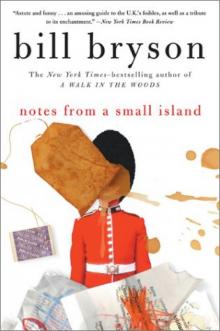 Notes from a Small Island
Notes from a Small Island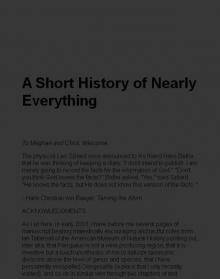 A Short History of Nearly Everything
A Short History of Nearly Everything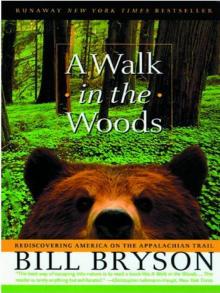 A Walk in the Woods
A Walk in the Woods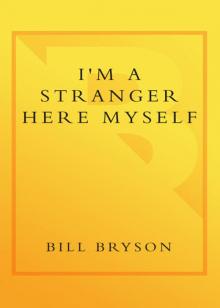 I'm a Stranger Here Myself
I'm a Stranger Here Myself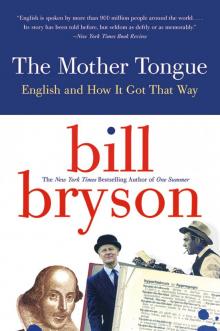 The Mother Tongue
The Mother Tongue Shakespeare
Shakespeare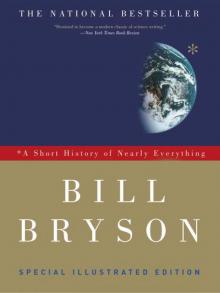 A Short History of Nearly Everything: Special Illustrated Edition
A Short History of Nearly Everything: Special Illustrated Edition The Best American Travel Writing 2016
The Best American Travel Writing 2016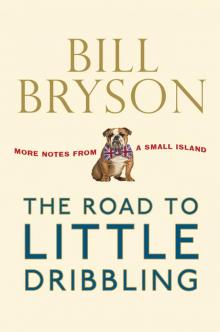 The Road to Little Dribbling
The Road to Little Dribbling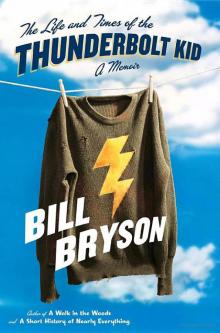 The Life And Times Of The Thunderbolt Kid: A Memoir (v5.0)
The Life And Times Of The Thunderbolt Kid: A Memoir (v5.0)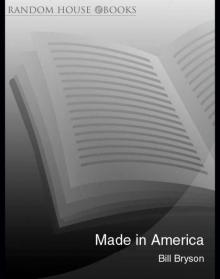 Made In America
Made In America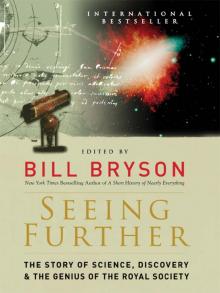 Seeing Further
Seeing Further Shakespeare: The World as Stage
Shakespeare: The World as Stage The Life and Times of the Thunderbolt Kid
The Life and Times of the Thunderbolt Kid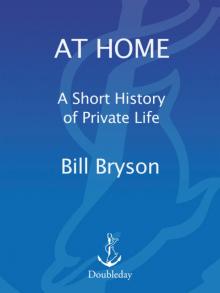 At Home
At Home Bryson's Dictionary For Writers And Editors (v5.0)
Bryson's Dictionary For Writers And Editors (v5.0) Neither Here Nor There
Neither Here Nor There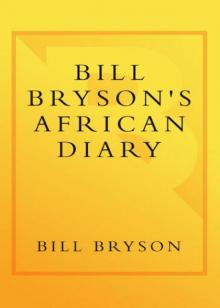 Bill Bryson's African Diary
Bill Bryson's African Diary